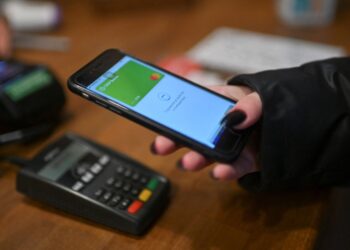In the digital era, providing exceptional customer experiences has become paramount for businesses seeking to stand out in a competitive landscape. One of the critical elements driving customer satisfaction is User Experience (UX) design. UX design is the art of creating products and services that are intuitive, enjoyable, and efficient for users. It goes beyond aesthetics and encompasses a customer’s entire journey while interacting with a brand. This article talks about the crucial role of UX design in enhancing customer experience, highlighting its impact on customer satisfaction, brand loyalty, and business success.
Understanding UX Design: UX design involves crafting products and services that address users’ needs, preferences, and pain points. It encompasses various elements, such as usability, accessibility, aesthetics, and functionality. A well-executed UX design prioritises the user’s journey, ensuring every touchpoint is seamless and intuitive. From websites and mobile applications to physical products, UX design principles apply to various aspects of customer interactions.
Importance of UX Design in Customer Experience
Customer-Centric Approach
UX design places customers at the centre of the design process. By conducting extensive user research, UX designers gain insights into customer behaviours, preferences, and pain points. This knowledge allows them to create products and services that cater to the target audience’s specific needs. A customer-centric approach ensures businesses deliver solutions that resonate with users, ultimately leading to higher customer satisfaction.
Enhanced Usability
An essential aspect of UX design is ensuring the usability of products and services. Customers value seamless interactions and frictionless processes. UX designers focus on streamlining navigation, minimising clicks, and reducing the user learning curve. When customers find it easy to accomplish their goals, they are more likely to have positive experiences.
Example – Consider the success of ride-hailing apps like Uber and Lyft. These platforms prioritise usability by offering simple and intuitive interfaces. Users can request a ride with just a few taps on their smartphones, making the overall experience highly efficient and enjoyable.
Improved Customer Satisfaction
UX design directly impacts customer satisfaction. When customers have positive experiences with a product or service, they are likelier to develop a favourable brand perception. On the other hand, a poorly designed user experience can lead to frustration and dissatisfaction, potentially driving customers away from competitors.
Example – Amazon’s one-click ordering feature is a prime example of enhancing customer satisfaction through UX design. By reducing the steps required to purchase, Amazon streamlines the buying process, leading to higher customer satisfaction and increased sales.
Increased Brand Loyalty
A great user experience fosters brand loyalty. Customers who positively interact with a brand are more inclined to repeat purchases and recommend the brand to friends and family. Satisfied customers are more likely to be swayed by competitors, resulting in higher customer retention rates.
Example – Apple is renowned for its emphasis on UX design and has built a loyal customer base. From the intuitive interface of its devices to the seamless integration between software and hardware, Apple prioritises UX design to create brand loyalty.
Competitive Advantage
A superior user experience can be a significant competitive advantage in today’s crowded marketplace. When customers have multiple options, they will likely choose the product or service that offers the best experience. A well-designed UX sets a brand apart from competitors and can be a crucial differentiator in a saturated market.
Example – Slack, a famous team collaboration tool, gained a competitive edge by offering a user-friendly interface and smooth communication features. Its success lies in its ability to simplify complex workflows, making it a preferred choice for businesses seeking efficient communication and collaboration solutions.
Cost-Effectiveness
Investing in UX design upfront can save costs in the long run. When products or services are user-friendly, they require less customer support and lead to fewer customer complaints. Also, a positive user experience reduces the likelihood of users abandoning their carts during online purchases, thereby increasing conversion rates and revenue.
Example – The travel website Booking.com employs UX design principles to create a smooth booking process. The platform’s straightforward design and transparent pricing result in fewer booking errors and customer inquiries, leading to cost savings on customer support.
AccessUX Designibility and Inclusivity
A crucial aspect of UX design is ensuring accessibility for all users, regardless of their physical or cognitive abilities. By making products and services inclusive, businesses expand their reach to a broader audience and demonstrate a commitment to social responsibility.
Example – Microsoft’s inclusive design approach ensures that its products are accessible to users with disabilities. Features like voice control and screen readers in Windows demonstrate their dedication to creating an inclusive user experience.
Reducing Customer Friction
Another critical role of UX design in enhancing customer experience is reducing customer friction. Friction refers to any obstacles, complexities, or frustrations customers encounter when interacting with a product or service. UX designers aim to identify and eliminate these friction points to create a smoother and more enjoyable user experience.
Minimising customer friction is crucial because it directly impacts customer satisfaction and conversion rates. Customers who face unnecessary challenges or barriers are more likely to abandon their tasks, leading to lost business opportunities. On the other hand, a frictionless experience encourages customers to complete their desired actions, such as making a purchase or signing up for a service.
Example – Online retailers often face the challenge of cart abandonment during the checkout process. Long and complicated forms, unexpected shipping costs, and mandatory account creation are familiar sources of friction. UX designers can address these issues by implementing features like guest checkout, transparent pricing, and autofill options to streamline the process and reduce friction.
UX design shapes the customer experience and can make or break a brand’s success. Businesses can gain a competitive advantage in the market by adopting a customer-centric approach, enhancing usability, and fostering brand loyalty. Also, Investing in UX design leads to increased customer satisfaction, results in cost savings, and demonstrates a commitment to inclusivity and accessibility. In today’s customer-driven world, prioritising UX design is no longer an option but a necessity for businesses seeking long-term success and sustained growth. Companies can build strong relationships with customers by continuously refining and optimising the user experience, driving brand loyalty and customer advocacy. The impact of UX design on customer experience extends beyond aesthetics and functionality; it is the key to unlocking a brand’s full potential and creating lasting.
Also Read:






























































